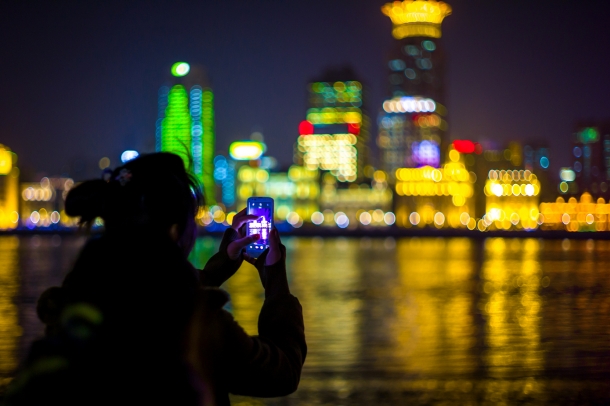The Australian Lifestyle Expo will provide Australian brands with a powerful gateway to China when it launches in September.
Here, project director Li Zhang shares unrivalled market insights.
What are some of the opportunities opening up to Australian businesses looking to expand into China?
China and Australia’s bilateral relationship is at its best time in history. Today, China is Australia's largest two-way trading partner in goods and services, its largest goods export destination, and an increasingly important source of investment.
The partnership and exchanges are not limited to government or business levels – Chinese citizens and consumers also have a very positive sentiment towards Australia and the Australian way of life. In 2015, 1 million Chinese people travelled to Australia, creating a valuable in-bound tourist market. They spent in total AUD 7.5 billion, more than the amount spent by Britons, Americans and Canadians (Source: Tourism Australia).

These travelers who have experienced Australia’s unique lifestyle become the best ambassadors of Australia in China, keen to keep in touch with ‘the Australian way of life’ after they return to China. This is one of the key reasons that Australian retail brands should be presented and accessible to Chinese consumers in China.
Australian businesses are also embracing e-commerce in China. Chinese netizens are big fans of online shopping, and Chinese retail giant Alibaba has transformed Singles’ Day (11 Nov) into the world’s largest shopping event. In 2015, Chemist Warehouse broke several Alibaba records, including being the fastest retailer to sell 1 million yuan of product on Tmall, which it did so in less than three minutes (Source: Fairfax).
Several smaller retailers are also using the partnership between Australia Post and Tmall to pick up a piece of this lucrative pie.
We wish to see more small to medium brands tackling Chinese markets by leveraging e-commerce.
Under ChAFTA, the tariff for fashion products exporting from Australia to China is reduced significantly. For example, the tariff of most garments categories was 16% before the ChAFTA; now it has been reduced to 9.6%, and will be reduced to 0% in January of 2019. This means that Australian fashion products are becoming more price competitive in the Chinese market.

As many Australian fashion brands have their products designed in Australia and manufactured in China, they might enjoy more benefits from ChAFTA. ChAFTA allows preferential rates of customs duty to apply to goods which have originated in either Australia or China. If Australian fashion brands manufacture goods in China and then on-sell in China, there is no need to import into Australia or pay Australian customs duty, therefore they could save much lead time and cost.
What can the Chinese market offer Australian brands that other markets can't?
First, China’s economy growth is continuously creating momentum. China’s economic growth has averaged 10% per annum over the last three decades and is expected to further expand at 7% per annum (Source: The World Bank). The next five years, we expect to see an increasing demand for high value, high quality goods and services.
Secondly, there is the ease of doing business in China. Australia (East Coast) has only three hours time difference with China, and the Australian West Coast has no time difference. Every day, there are 40 flights connecting Australia and China. Australia’s Chinese communities are one of the most important ethical groups in the country, with 1 million people being of Chinese descent. Australia is also a popular education destination for Chinese students. In 2014, 34% of total international students came from China, meaning that Australian brands who wish to enhance their understanding of the Chinese market will not find it too difficult to recruit talents that understand both cultures.

Finally, as mentioned above, for many Australian brands – especially in the fashion and textile categories – China is both an important manufacturing base and now an emerging consuming market. This means that Australian brands could manufacture and sell there, to enjoy the competitive benefits of short lead time, low logistic cost and low tariffs.
First, because of China's economic growth, Chinese consumers' disposable incomes are much higher than before. With those disposable incomes, Chinese consumers have generated demands of enjoying more premium products, but the demands are not being met by domestic companies. Therefore, the desire for purchasing good quality imported products is significant. China has transformed from a world factory to a strong buying market.
Secondly, as mentioned above, Chinese consumers have an increasing understanding of Australia and its brands that represent the uniquely Australian way of life. This being said, Australian brands really have distinctive characteristics compared to brands from other developed markets such as Europe and America. For Chinese consumers, Australian brands are seen as healthy, green, organic, natural, environmentally friendly and high quality, therefore their willingness to pay is pretty high.
Thirdly, Australia is a market of ‘only’ 24 million people – the size of Shanghai’s population. A lot of progressive and ambitious brands would like to consider other mature markets which could bring them new exciting distribution channels and amazing sales outcomes.
Last but not least, the exchange rate of the Australian dollar to RMB is at a historically low point at the moment, which is favourable to Australian exporters.

China is a complex retail and wholesale environment. What are some of the first steps businesses should take to expand there?
The first important step is to understand Chinese people and Chinese culture. Any business, if you ignore the cultural aspects, it will be difficult to market and sell in another country, especially in China. How can you make this happen? You don’t need to wait until you speak fluent Chinese – the easiest way is go to China and see with your own eyes. You will find a totally different perspective of China compared to the perceptions that you learnt from the media or books. Being present in China is the most recommended way to understand Chinese aspirations, values and way of life.
Secondly, make sure that there is a fit between your products and Chinese consumers’ needs. What will be your unique selling point and value proposition? Are there already many similar brands in China that bring equal or higher value to consumers? Chinese consumers are fascinated by brand stories and brand heritages.
Finally, identify your partners. As China is such a unique market, with potential barriers of language, culture and regulations, a reliable partner is definitely key to the success of your business. If you have the opportunity to communicate with professional Chinese buyers, try to figure out who is really experienced about the local market, and at the same time can understand and respect your brand positioning and business strategies as well.

What are some of the challenges of this market?
Language, local culture, consumer buying habits, different marketing channels and regulatory requirements can all make China a different market to access.
Competition from both local and oversea players is fierce, as everyone now sees the miracle of the fast-growing Chinese market. Australia has always been recognised as a supplier of high quality food and wine, but when Chinese consumers think about fashionable, creative and innovative products, Australia might not be put on the top of the list. It needs time to communicate with local consumers and change their perceptions of Australian brands – the Australian Lifestyle Expo is the perfect stage to deliver that new image to Chinese consumers.
The Australian Lifestyle Expo is a channel for businesses to test the market. How long has it been around and what prompted the launch of this expo?
This is the first ever exhibition happening in China that is dedicated solely to Australian brands. Our two organisers, Li and Jade, have been working in international trade and consulting with retail brands on marketing and sales strategy for more than 10 years. We believe that the moment has come, and now it’s up to Australian brands to seize it and leverage to their best.
What makes the Australian Lifestyle Expo different from traditional expos?
The Australian Lifestyle Expo is not just a physical expo, but an ongoing consultation service package. Before the Expo, we organise free info sessions and provide one-on-one coaching to help exhibitors understand the Chinese market, Chinese consumer behaviours, local regulations and rules. We assist them with marketing communication (marketing content drafting, translation, personnel hiring), travel logistics (visa, flights, hotel) and sample exportations. After the Expo, we have one-on-one debriefs to help companies follow up with buyers and create continuous relationships with potential partners. According to exhibitors' requests, we provide professional market-entry consulting services, including customised industry research, competitive landscape review, consumer interview and focus groups, channel partnership setting-up, marketing strategy recommendations, and exporting agencies.
The Expo Director Li Zhang has 15 years of professional experience in international trading. She is especially knowledgeable within the fashion and retail industries in China, Japan and Australia. She is a professional business strategy consultant with an MBA degree from the University of Melbourne - Melbourne Business School.

Our Business Development Director Jade Jin has 8 years of experience in marketing and PR across the FMCG, healthcare and travel industries. She has extensive networks in Australia, China and France. Jade recently graduated from University of Melbourne - Melbourne Business School with an MBA degree, and holds a Masters Degree of Marketing from Paris Institute of Political Studies.
For the rest of our team, we have several in-house experts and professionals based in both Australia and China, respectively experienced in event organising, international trading, retail marketing, e-commerce, and social media communication areas.



